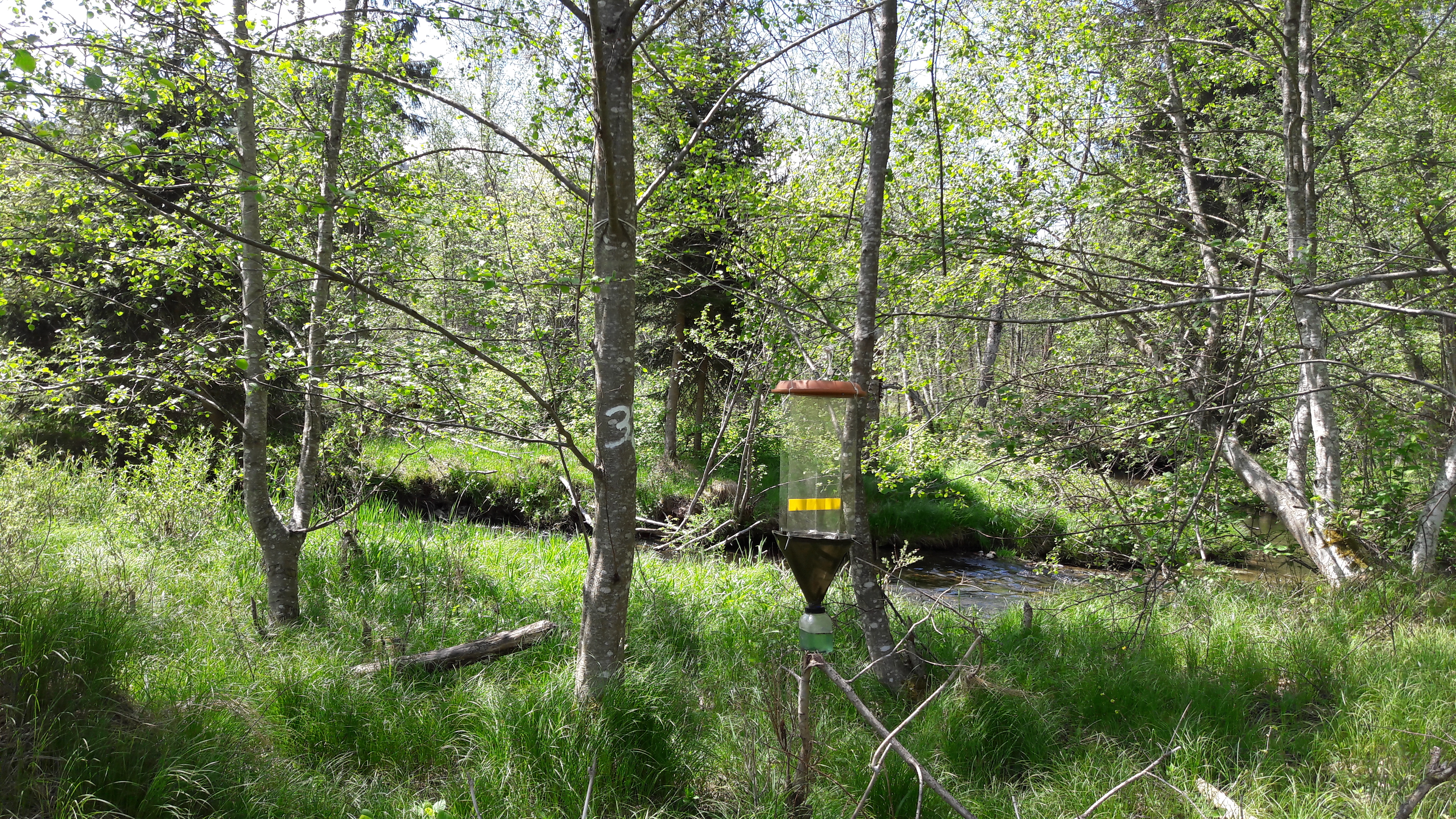Traditional monitoring
Trapping and sensing animals is closely linked to their behaviour and ecology, requiring strategic placement of traps and baiting methods tailored to specific species. For example, most moths are often attracted to light sources, making light traps an effective method of monitoring their populations - but not for all. Similarly, flower-visiting insects can be attracted by flower scents or colours, mimicking the natural cues that guide their foraging behaviour. For species that are not directly attracted by some kind of lure, it is necessary to strategically place traps - be it a Sherman trap or a trail camera. The success of these trapping and sensing efforts depends on a deep understanding of the target species’ behaviour, habitats and ecological interactions. Let’s take a look at how this has traditionally been done.
Audio-visual surveys: This method involves experts observing and recording species presence and partly also behavior through visual and auditory cues, which is often used for birds and other noticeable species such as butterflies. Often, observers walk along predetermined routes or transects through a habitat while recording all observed species and their abundance (transect walks). In ornithology, the observer might also record all bird species seen or heard within a specified radius or time period from a designated point (point count).
Trapping: Trapping involves physically capturing organisms using specialized devices such as traps or nets. These traps are strategically placed in the environment to intercept target species, allowing researchers to collect specimens for further study. How to place such a trap is a science in itself. Trapping methods vary depending on the target taxa and research objectives. The most commonly used ones are:
-
Sherman Trap: Small, rectangular wire cages with a spring-loaded door that closes when an animal enters to investigate the bait. These traps are commonly used to capture small mammals such as rodents and shrews. They are designed to be humane and allow for the safe capture and release of animals for study (provided they are collected in time).
-
Drift fences: Used for smaller mammals, reptiles and amphibians, whose dispersing routes are intercepted by small ~15 cm fences. The animals move along the fence and are led into a bucket which has been buried into the ground. When the bucket is large enough, animals cannot escape. This method allows capturing the animals live, but buckets need frequent monitoring to reduce stress and harm to the animals.
-
Pan traps: Shallow containers filled with a liquid solution used to attract and trap small flying insects, particularly bees and other pollinators. The containers are typically placed in the environment, often near flowering plants, where they attract insects by color and scent. Once insects land on the liquid surface, they become trapped and eventually drown.
-
Light Trap: Utilize artificial light sources to attract nocturnal insects, which are then captured using containers, which can be equipped with a killing agent. These traps are commonly used to sample moths.
-
Pitfall Traps: Consist of containers buried in the ground with an opening at the surface, often containing preservative fluid in which the insects (and by-catch) drown. These traps capture ground-dwelling insects and other small invertebrates.
-
Flight Interception Traps: Designed to intercept flying insects as they move through the environment. These traps typically consist of a barrier such as a net or funnel placed in the flight path of insects. When insects encounter the trap, they are directed into a collection vessel filled with preservative fluid.

- Malaise Trap: Passive traps designed to capture flying insects as they navigate through the environment. These traps consist of a tent-like structure with a collection vessel at the top. Flying insects are funneled into the collection vessel as they move upwards. Malaise traps are particularly useful for sampling flying insects. The famous “Krefeld-study” 1 used Malaise Traps.
For more information on traditional trapping of insects, see here2.
QUESTIONS TO BE DISCUSSED
How could one automate these traditional systems? What are the costs of traditional monitoring? Which information might not be gathered by these automated compared to traditional methods?
SPOILER
Many trap systems designed for insects result in samples containing sometimes hundreds of dead individuals from many different species pooled in fixative. Analysis of these samples is very labour-intensive and time-consuming. Individual samples must be manually cleaned and pre-sorted. Identification to species level requires expert knowledge, but as the number of available taxonomists continues to decline, sample analysis can take years. Traditional sampling methods also often involve direct interaction with the study area, such as vegetation surveys, trapping and sample collection. As such, they are often labour intensive and time consuming. Proximate sensing, when fully autonomous, should drastically reduce these labour costs. However, today's systems are often semi-autonomous and require, for example, plot visits to collect data or to repower the system. In addition, such systems can be much more expensive to purchase than traditional methods. Finally, it is important to remember that not all information gathered by experts in the field can be captured by sensors. For example, some species pairs cannot be distinguished based on their outer appearance alone.
